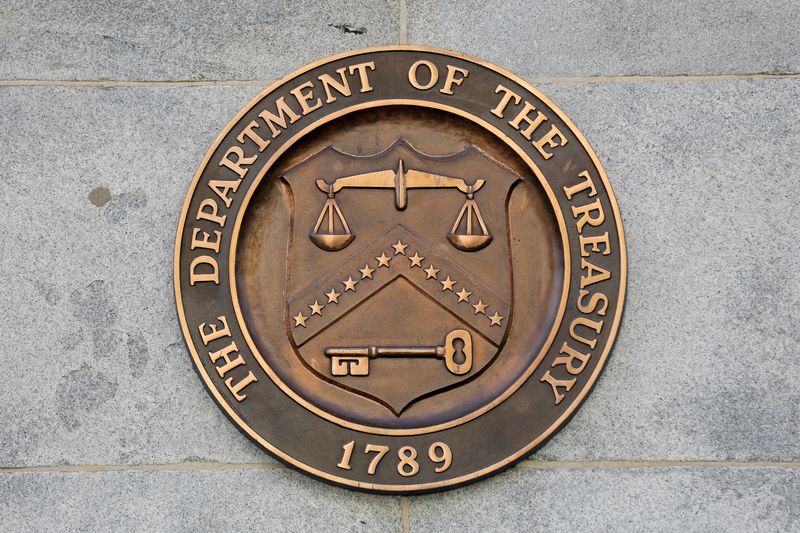By Karen Brettell
(Reuters) - The U.S. Treasury Department is likely to keep cutting auction sizes when it gives its refunding estimates for the coming quarter next week, after ramping up issuance to pay for coronavirus-related spending.
With the Federal Reserve paring bond purchases and getting closer to shrinking its balance sheet, however, it may be the last time in a while that the government has such a luxury.
The Fed on Wednesday said it is likely to hike interest rates in March, and reaffirmed plans to that month end the asset purchases it put in place to stabilize financial markets and the economy during the pandemic.
U.S. central bank Chair Jerome Powell pledged a sustained battle to tame inflation, which in addition to rate hikes is likely to include a more rapid reduction of its bond holdings than it has done before. Once that begins, the Treasury essentially needs to replace the bonds maturing from the Fed's portfolio with new issuance at roughly a one-for-one pace.
But since the Fed gave few details on how and when it will reduce its $9 trillion bond portfolio, the Treasury is expected to continue reducing the amount of its quarterly bond sales. It ramped up debt auction sizes in 2020 and 2021.
“We don’t have much information to really change the issuance as of now, because we just don’t have much information on what the Fed’s going to be doing,” said Subadra Rajappa, head of U.S. rates strategy at Societe Generale (OTC:SCGLY). “For now, they probably continue to cut coupon issuance sizes and then re-evaluate at the May refunding.”
The Treasury on Monday afternoon will report on how much it expects to borrow next quarter and Wednesday morning will break down details on what that means for different maturities.
Seven-year notes and 20-year bonds are likely to continue to see the largest cuts, after increases in these auctions left the issues struggling with weak demand.
Seven-year note auction sizes, for example, have fallen to $53 billion, after running at $62 billion from January through October 2021. They are up from $32 billion at the beginning of 2020.
The U.S. government is overfunded as it faces a likely budget deficit of $1.35 trillion in fiscal year 2022, based on primary dealer estimates. That is down from $2.77 trillion in fiscal year 2021 and a record $3.13 trillion in fiscal 2020.
Morgan Stanley (NYSE:MS) expects the debt-to-gross domestic product ratio to decline 7 percentage points in 2022, after reaching the highest level since World War Two during the pandemic.
The Treasury is not expected to need to increase issuance of coupon-bearing debt this year, though any hastening of the Fed’s balance sheet reduction could change this outlook.
“Even under a fairly aggressive balance sheet runoff scenario, it doesn’t seem like Treasury will need to increase auctions anytime soon, and should still be set to cut them in February,” said Zachary Griffiths, a macro strategist at Wells Fargo (NYSE:WFC).
The Fed said it will rely primarily on letting bond holdings run off the balance sheet, rather than selling bonds outright, which could be seen as a more aggressive tightening strategy.
If necessary, the Treasury could increase issuance of Treasury bills, which would likely see strong demand as money market investors continue to struggle with a dearth of short-term, high-quality assets.
“There likely would be demand for absorbing more bill issuance if that were needed,” Griffiths said.
Demand for the Fed’s reverse repo facility, which is an indicator of excess liquidity, was at $1.58 trillion on Thursday. An increase in the supply of Treasury bills would likely reduce demand to lend to the Fed in the reverse repo facility.
